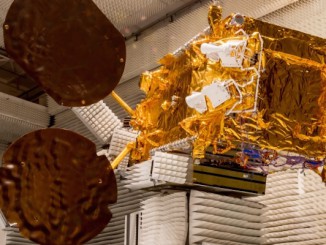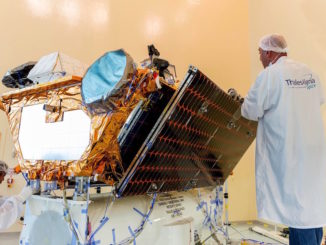
SpaceX completed its first West Coast Falcon 9 launch of the year Thursday night, which featured the latest batch of Starshield satellites for the National Reconnaissance Office.
Liftoff of the NROL-153 mission from pad 4 East at Vandenberg Space Force Base happened at 7:53 p.m. PST (10:53 p.m. EST, 0353 UTC). This was SpaceX’s fourth orbital launch of the year.
The Falcon 9 first stage booster for this mission, tail number B1071 in the SpaceX fleet, launched for a 22nd time. It’s previous flights included three rideshare missions (Transporter-8, Transporter-9 and Bandwagon-2), four missions for the NRO (NROL-87, NROL-85 and NROL-146), NASA’s SWOT spacecraft and 13 Starlink flights.
A little more than eight minutes after liftoff, B1071 landed on the droneship, ‘Of Course I Still Love You,’ marking the 116th landing for OCISLY and the 394th booster landing to date.
The NROL-153 mission was the first launch of the year supporting the NRO’s proliferated architecture satellite constellation. It completed six launches using Falcon 9 rockets in 2024 and listed at least five missions planned for 2025:
- NROL-153
- NROL-57
- NROL-192
- NROL-48
- NROL145
“The NRO continues to build and fortify the largest government constellation in history, with proliferated launches continuing through 2028,” the agency wrote in a prelaunch press kit. “Having hundreds of NRO satellites on orbit is invaluable to our nation and our partners. They will provide greater revisit rates, increasing coverage, faster delivery of information, and ultimately help us to more quickly deliver what our customers need.”
The shift to managing hundreds of satellites in low Earth orbit is something that the NRO has described as a top priority in multiple venues. During last month’s Space Force Association Spacepower Conference, Dr. T.J. Lincoln, the director of the NRO’s Mission Operations Directorate, said that the NRO is increasingly moving towards automation in order to better mange the increasingly complex systems.
“The good thing about automation, at least with the proliferated, is it’s being baked in early on. So as the ops lead for the NRO, I’m demanding those things are built into the system because there’s no way to operate multiple hundreds of satellites the same way we do today,” Lincoln said. “The mission management has to happen, the duty cycle tasking has to happen, the re-tasking has to happen automated, with humans on the loop to be able to tweak that to make sure we’re meeting those operational successful needs that we have to.”
Col. Eric Zarybnisky, the director of the U.S. Space Force’s Office of Space Launch and fellow panelist alongside Lincoln, added that automation will also help expedite the transition of data from intel gathered on orbit down to those who need it most.
“It’s not just about the proliferation, it’s about how do I get the data out faster. The NRO has been typically known for getting data out there in hours, maybe minutes. We gotta get to seconds,” Zarybnisky said. “We’ve got to get the data in the hands of decision makers and warfighters within seconds and automation, [artificial intelligence] and [machine learning] are going to make that happen.”
The proliferated architecture constellation are believed to consist of Starshield satellites, manufactured by SpaceX in partnership with Northrop Grumman, though neither company has publicly confirmed that these satellites make up the constellation.
Starshield are a government variant of the commercial Starlink satellites.



